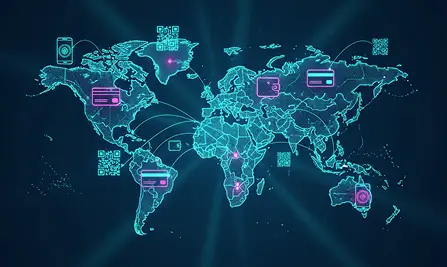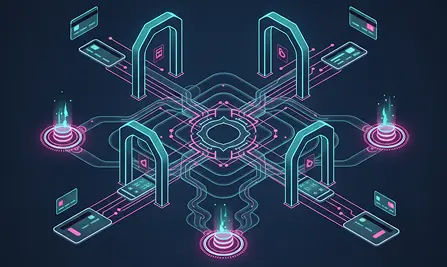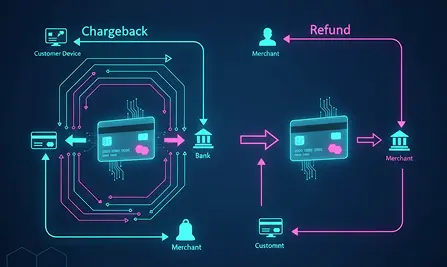Payment Risk Management
Payment risk management is a strategy that helps identify, assess and mitigate potential risks associated with payment processing. These risks include fraud, chargebacks, data breaches, regulatory breaches, business disruptions and financial losses.
In this article, let’s look at how to regulate payment risk management, why it’s important for businesses to thrive and how it helps to combat fraudsters.
What a risk management system consists of
Online payments always carry a risk of fraud, but there are areas and regions where this risk is maximised. Under the threat of payment processing risk management, financial transactions from Pakistan and a number of other countries around the world.
Let’s tell you some elements of payment processing risk management strategy:
- Assessment. Assess the state of your current transaction processing system and what weaknesses there are.
- Fraud Prevention. To combat fraudsters, especially for debit and credit card payments, modern tools are used to detect suspicious transactions. They also install systems to authenticate customer information and use neural networks to find irregular transfers.
- Managing chargebacks. You need to develop a strategy to help reduce chargebacks and resolve disputes effectively.
- Risk management through payment gateways. Choose to partner with providers that assess payment risk and offer customers options to mitigate it.
- Data security. Modern encryption and data transmission tools allow you to protect your information from fraudsters. Use only those gateways that follow data protection regulations.
- Continuous monitoring and analysis. Without learning, it is impossible to reduce risk in payments. BillBlend uses machine learning, which helps to detect suspicious transactions at an early stage. The system is constantly updated, so it is difficult for fraudsters to bypass the protection.
The main goal of the strategy is to protect the financial interests of the business and its reputation, as well as to provide a safe and convenient payment experience for customers.

Payment risks in e-commerce
E-commerce is growing rapidly, and with that comes increasing risks in payment systems. Below are the key dangers that merchants and financial organisations are exposed to
Fraudulent transactions
One of the most dangerous types of threats is payment fraud. With the growing popularity of instant transfers via digital wallets and banking apps, attackers are developing increasingly sophisticated schemes to steal data. Major forms of fraud include:
- Identity theft. Using other people's personal information to create fake profiles and conduct illegal transactions. The consequences can be catastrophic, as restoring lost reputation and finances takes considerable time.
- Credit card fraud. Illegal use of credit cards to purchase goods or withdraw cash. Attackers obtain data through phishing, database hacking or skimmers.
- Account hacking. Fraudulent activity that involves illegally accessing users' accounts and then changing settings or conducting transactions without their consent.
Chargebacks
Another type of high risk payment relates to a situation where a customer purchases a product but later requests a refund from the bank, claiming that the product was not received or was of inadequate quality. This problem poses a threat to business, as banks often honour customer requests even if the claims are unfounded, resulting in losses for sellers.
Non-compliance
Financial institutions are required to comply with various payment processing standards such as PCI DSS and AML. Violation of these standards can result in fines and legal consequences.
Operational risks
Technical malfunctions, system failures, human error and other unforeseen circumstances can disrupt payment processes. Workflow optimisation and staff training are necessary to minimise these risks.
Fintech fraud
Thanks to the development of APIs and the introduction of new technologies, electronic platforms have become vulnerable to fraudsters. This is especially true for peer-to-peer payments and open banking. Therefore, it is crucial to choose reliable fintech solutions with high standards of protection.
Market risks
These risks arise outside the control of merchants and are related to changes in market conditions or consumer behaviour. For example, the growing popularity of cryptocurrencies is forcing businesses to adapt to the new environment in order to remain competitive.
Merchants and financial institutions must consider the specifics of high-risk merchant accounts in order to effectively protect themselves and their customers from potential losses.

Conclusion
Effective payment risk management plays a key role in ensuring a safe and secure experience for customers and business stability. Our analysis shows that fraud, chargebacks, non-compliance and other threats require a thorough approach to protecting financial transactions.
BillBlend offers comprehensive solutions to minimise these risks, including the use of advanced fraud prevention tools, data security and continuous transaction monitoring using machine learning. This approach not only protects the financial security of the business, but also increases customer confidence, ensuring stable development in the digital economy.
FAQ
What is payment risk management?
Payment risk management is the process of identifying, assessing and mitigating potential risks associated with payment processing, such as fraud, chargebacks and regulatory violations.
What are the main types of payment risks?
The main types of payment risks include fraud, chargebacks, regulatory non-compliance, operational risks, fintech fraud and market risks.
How does BillBlend help in managing payment risks?
BillBlend offers effective fraud prevention, data security and transaction monitoring tools using machine learning to minimise risk and secure financial transactions.
Why is it important to manage payment risk?
Payment risk management protects businesses from financial losses, increases customer confidence, and ensures regulatory compliance to support sustainable growth and development.









